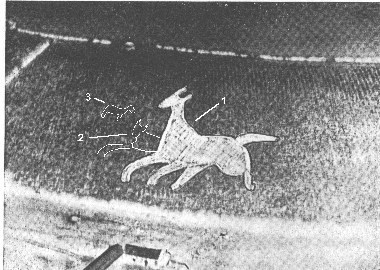Welcome to Oxhill
The village of Oxhill lies roughly half-way between the towns of Stratford-upon-Avon and Banbury, on the borders of Warwickshire and Oxfordshire, in the area known as the Vale of the Red Horse. This name was taken from a horse figure cut into the red earth of the hillside above the village of Tysoe, and looking south-east from Oxhill Church. The original figure is believed to date from Saxon times and was dedicated to the Saxon Horse God “Tui”, from which the village of Tysoe takes its name. The figure is reputed to have been some hundred yards long and seventy yards high.

This horse figure has been the object of much careful and studied research in recent times, and no less than five-horse figures have been discovered on these slopes. In 1767, the Warwickshire poet, the Rev. Jago refers to the horse in his poem “Edgehill” -
And
Tysoe's Wondrous theme, the martial horse,
Carved on the yielding turf, armorial sign of
Hengist, Saxon Chief! Studious to preserve
The Fav'rite form, the treach’rous conquerors
Their vassal tribes compel with festive rites
Its fading figure yearly to renew
And to the neighbouring vale impart its name.
In 1800 Simon Nicholls bought Sun Rising Farm from the Marquess of Northampton, and ploughed up one horse figure to avoid the obligation of scouring it annually. However, finding profits from the sale of cakes and ale at the Palm Sunday festival falling off as a result, he cut another smaller figure just south of the Inn, but this too is now lost.
Oxhill parish is somewhat vee-shaped, and a small stream runs northwards on the east side of the village. This is the “torrent of Oxhill” mentioned in 1183. The Domesday survey mentioned a mill and in the year 1241 John de Wauton conveyed a water mill here to one Simon de Wauton, who gave it, together with pond and sluice to Bordesley Abbey.
The name Oxhill derives front Ohtan Scylf which meant Ohta’s ledge of land, or hill, or slope, or slight ridge. In the Domesday Book it was spelt Octeselve: in the year 1157, Octhesselva: later, in 1187, Ofteschelva whereas by the year 1236 it had become Ocsulve. On occasions in the Parish records it has been written as Oxshull, and the local South Warwickshire dialect pronounces it Ocs-shull.
Oxhill is part of the Kington Hundred (Kineton) formed in the 12th century out of four Domesday hundreds (1169). These four were Tremelau Hundred, Honesberi Hundred, Berricestone Hundred and Fexloe Hundred, Oxhill originally being in the latter
Most people are fairly familiar with the couplet attributed to William Shakespeare - (the true authorship of which has never been verified) - regarding Piping Pebworth and Drunken Bidford, but another verse in the same style, referring to villages in South Warwickshire, possibly by the same author, is perhaps less well known.
Idlicote
on the Hill, Whatcote Downderry,
Beggarly Oxhill, Lousy Fulready,
Yawning Yettington, (Ettington)
Peeping Pillarton, (Pillerton)
And One-eyed Marston.
